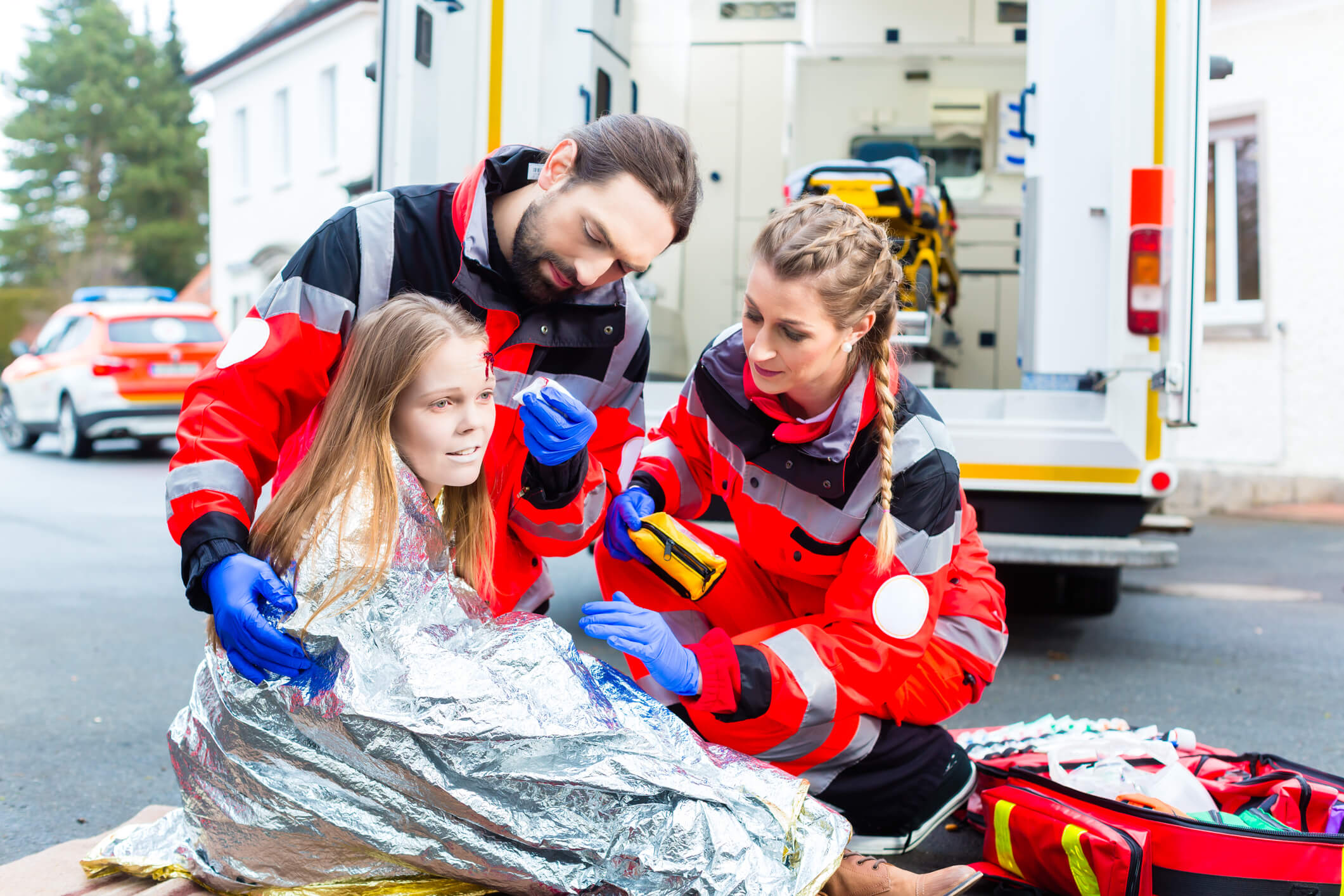
Unintentional injuries are the leading cause of death among children under the age of 15, and when natural disasters strike, children are often the first casualties. The health and social costs of emergencies and natural disasters often last for years or even decades. Floods in South Asia, for instance, left 1.8 million children out of school. This presents the possibility that the floods may affect children for the rest of their lives.
According to the National Survey on EMS Preparedness, many agencies don’t offer sufficient disaster training. As hurricane season looms large with winter snow and flooding getting closer on the horizon, now’s the time to brush up on emergency preparedness and how it affects the youngest and most vulnerable population: children. Here’s what your agency needs to do to get ready for the next big disaster.
Emergency Preparedness and Kids: A Primer
News reports of mass shootings and terrorist events are enough to scare anyone who cares about children, but the truth is that these emergencies remain uncommon. The most common emergencies affecting children are:
- Respiratory emergencies, including RSV in newborns, croup in toddlers and young children, asthma, and pneumonia. Skillful airway management with the right suction device is critical to managing these emergencies.
- Dehydration, often due to excessive vomiting or diarrhea. Monitoring the airway of any vomiting pediatric patient, especially an infant, is critical.
- Choking.
- Anaphylaxis due to allergen exposure. The most common allergens include insect stings and foods such as peanuts.
- Seizures, including febrile seizures.
- Physical trauma due to falls, car accidents, blows to the head, and bicycling accidents.
How Community Engagement Can Prevent Tragedies
EMS involvement in and education for the wider community is a key component of disaster preparedness. Consider providing free classes, especially at common injury sites, such as the local pool. A few simple strategies can greatly reduce the incidence and severity of childhood emergencies. Those strategies include:
- Keeping toddlers and infants rear-facing in their car seats as long as possible.
- Correctly installing car seats and ensuring the child is secured with the clasps in the right location each and every time. A poorly installed car seat can hurt a child.
- Keeping choking hazards away from children under three, who should not eat foods such as popcorn, uncut grapes, or uncut nuts.
- Requiring children to wear helmets every time they ride on a bicycle or tricycle, and replacing damaged helmets or those that do not fit.
- Only swimming in pools with a lifeguard, and teaching every child basic swimming safety.
- Advising parents of the risks of head injuries due to falls, and encouraging them to monitor their children when climbing or playing.
- Urging parents to secure all tall furniture to the wall to reduce the risk of falls.
Child-Specific Emergency Preparedness Training
Working with pediatric patients presents different challenges. Children may be unable to express themselves clearly, which can make it difficult to discern the source of the problem. Children may panic, exacerbating airway and cardiovascular issues. They may also struggle to accept that the scary stranger with the strange equipment is trying to help them.
Your agency must routinely train how to work with children. First responders who have little experience working with children should gain that experience through community events involving children.. Some simple realities to remember when working with children include:
- Equipment matters. Adult-sized equipment can injure pediatric patients, particularly during airway suction. Choose child-sized catheters and other disposables, and ensure that you have several on hand at any given time.
- Children struggle to separate fantasy from reality. Young children are beginning to develop language skills and may not be able to express themselves. A child might not be able to accurately report what has happened to them.
- A child’s psychological well-being is inseparable from their physical well-being. Separation from a parent or caregiver is traumatic. Whenever possible, ensure the parent is nearby and able to comfort the child.
- Strange adults can be scary to kids. Talk the child through what you’re doing in a calm, reassuring voice, even if they don’t seem to understand. Offer praise, and never threaten punishment or get angry if they are noncompliant.
The right equipment matters when working with children more than with any other population. To learn more about the right portable suction for your pediatric patients and to get details about why portable suction is so indispensable to pediatric care, check out our guide.















